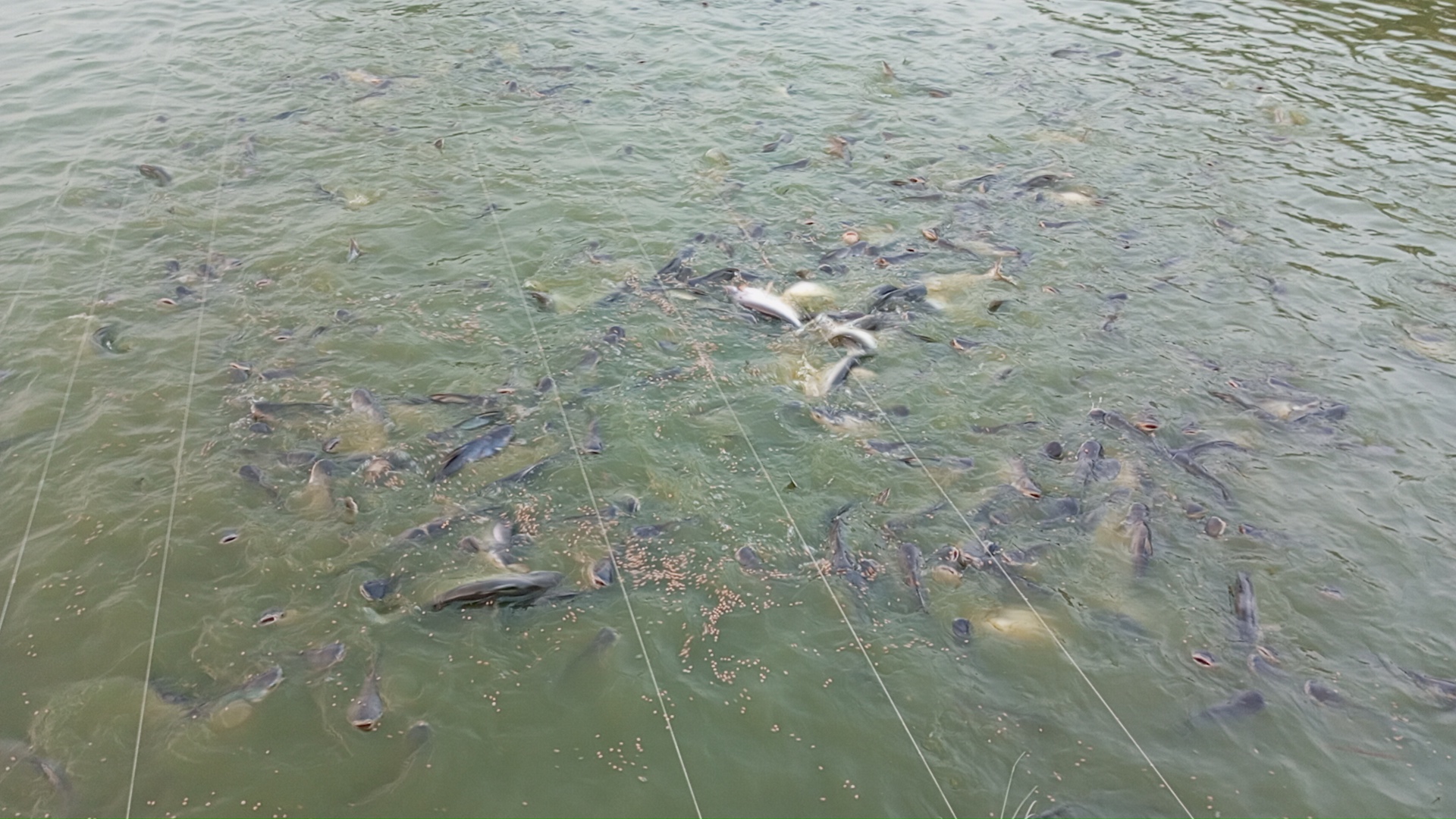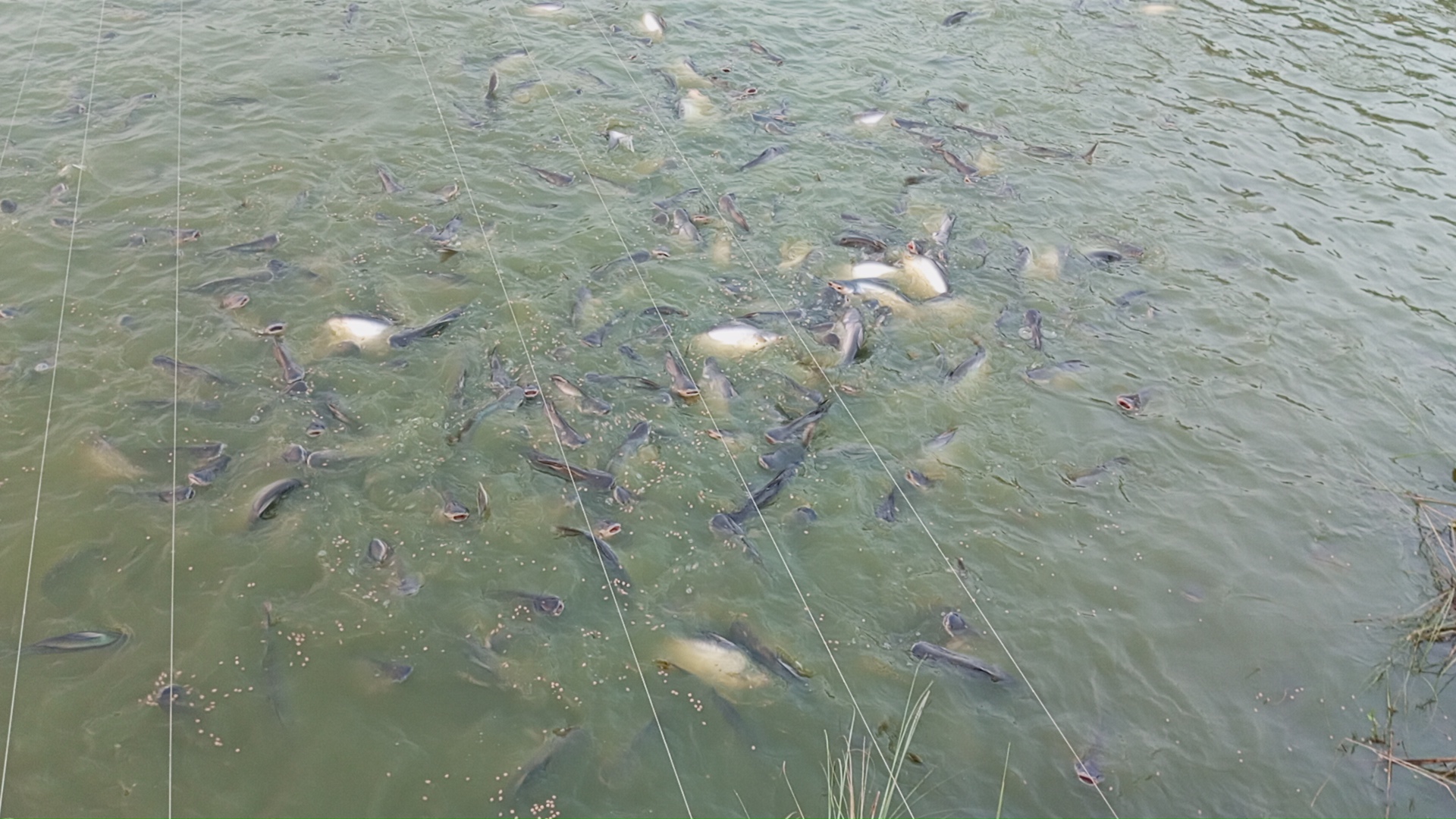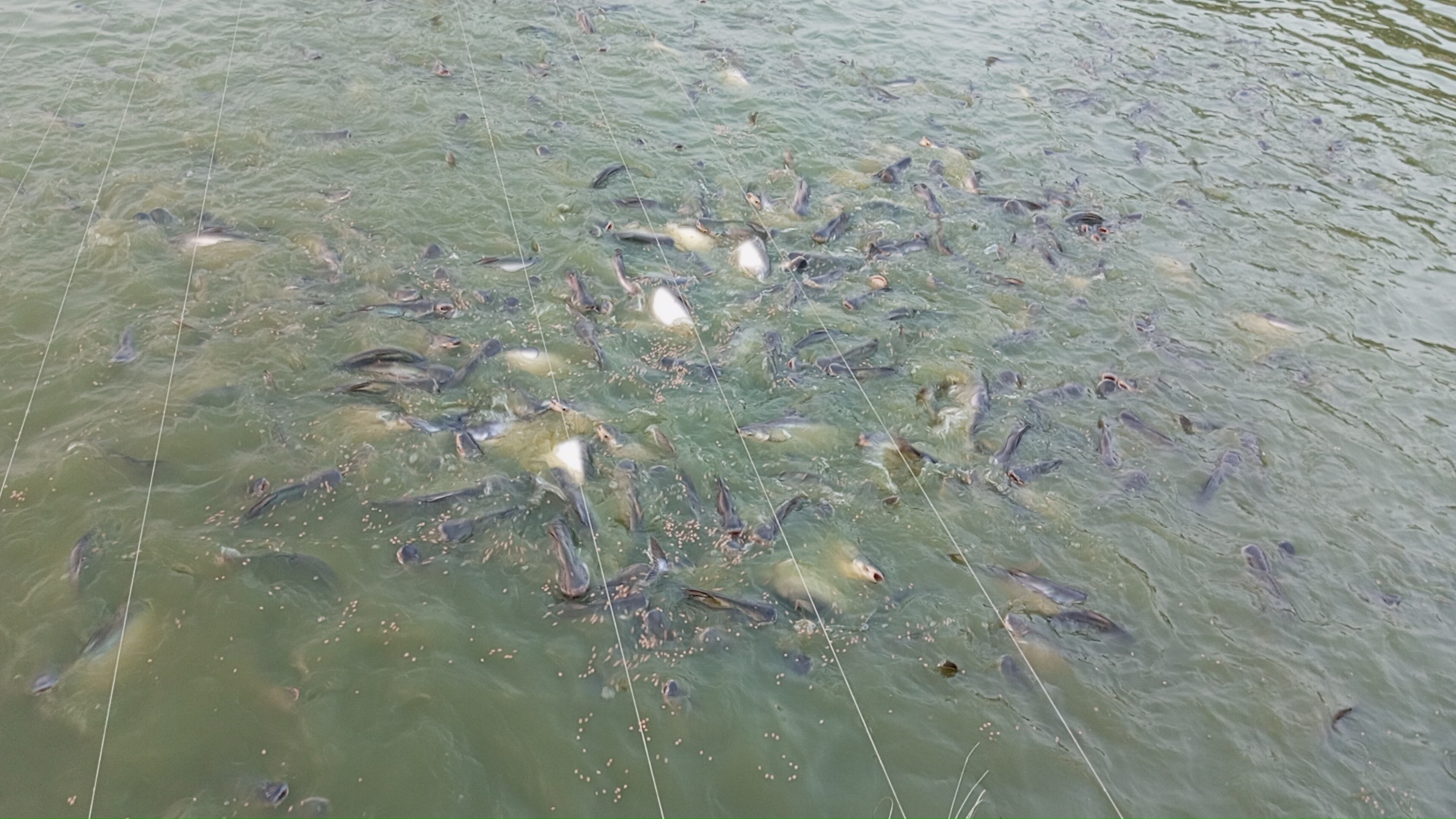| Latin name | observation date | Location |
|---|---|---|
| Pangasius Fish Feeding | 11.02.2023 | Chuadanga, Dhaka Bangladesh |

Feed should be provided based on biomass (around 3-5% of total body weight for young fish and around 2-3% for adults). Regularly monitor fish growth and health and adjust feeding quantities accordingly. Avoid overfeeding, as uneaten feed can reduce water quality. Poor water quality due to leftover feed or fish waste can stress the fish and make them more susceptible to disease. Regularly clean the pond or tank and maintain adequate filtration. Pangasius are warm-water fish; ideal temperatures range from 28–32°C (82–90°F). They may eat less if the water temperature falls too low. In smaller operations, alternative feeds like rice bran, vegetable scraps, and insect meal may be used to supplement the diet. However, balanced commercial feed is often better for consistent growth in large-scale farms.





| Camera used | Smartphone |
|---|---|
| Lens | Cell phone camera |
| F-stop | - |
| Iso speed | ISO |
| Focal length | MM |
| Photograph | Pangasius Fish Feeding |
| Location | Chuadanga,Bangladesh |
| Photographer | @mousomi009 |
| Link to original | community |
|---|---|
| Link | https://www.inaturalist.org/observations/250028591 |
| Latitude | Longitude | Map |
|---|---|---|
| 23.77826 | 88.63139 | https://www.openstreetmap.org/?mlat=23.84440&mlon=88.80644#map=16/23.84440/88.80644&layers=N |